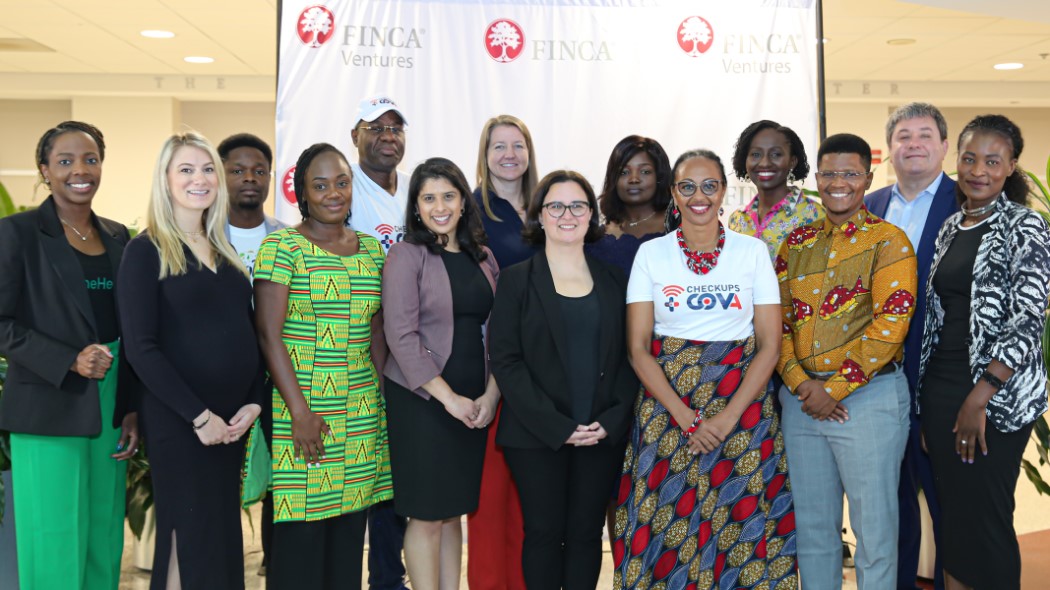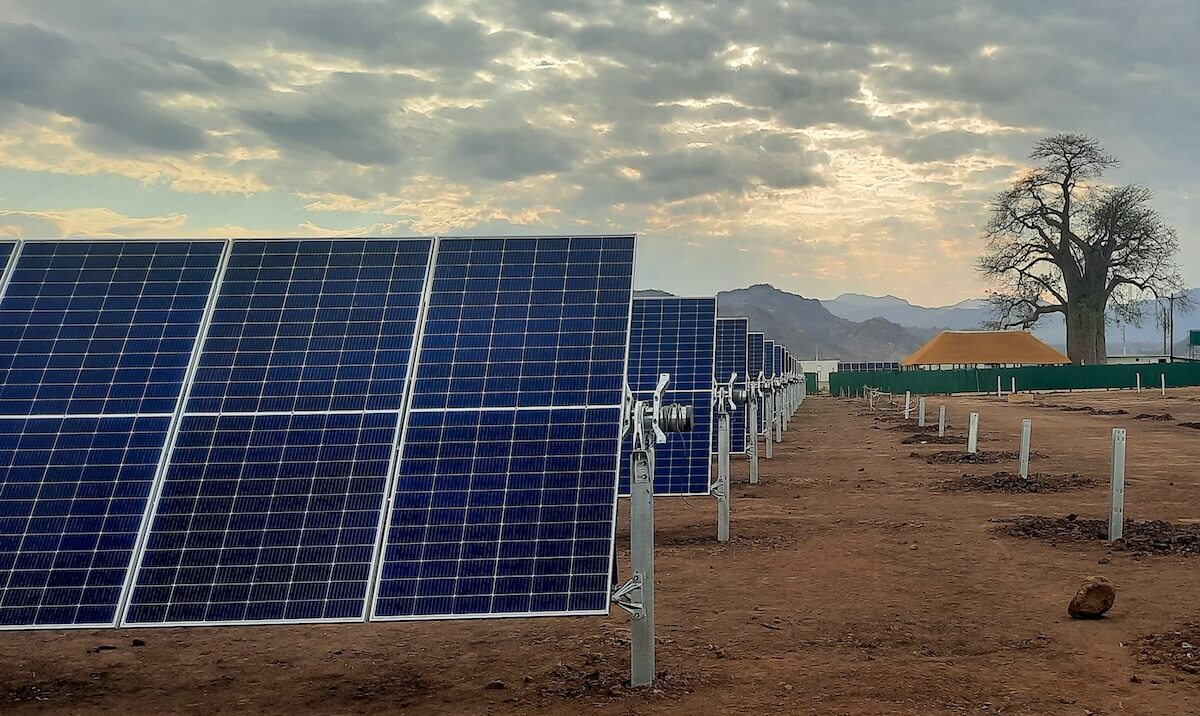Hello ImpactAlpha readers!
#Featured: ImpactAlpha Original
Arif Naqvi takes global financiers to task at the Milken Institute Global Conference. The founder of Abraaj Group, the $10 billion private equity firm headquartered in Dubai, has been trying for years to break investors of their short-term mindset. Now he has the short-hand to make them see what he is talking about: the Sustainable Development Goals.
Naqvi says long-term value creation requires investors to focus on global challenges and building the companies addressing them over time. Naqvi told a hall of seasoned financiers at the global conference there’s a ready list of challenges long-term investors should be interested in solving.
“Those challenges are out there. They’re called the SDGs,” he said. “They are a phenomenal investment opportunity.”
Read more on Abraaj’s long-term strategy from Dennis Price:
Arif Naqvi takes global financiers to task
#Dealflow: Follow the Money
Calvert Foundation pools $70 million for five impact loan funds. The Calvert Foundation, best known for its Community Investment Note, is adding a new line of business. Capital Aggregation is syndicating fixed-income opportunities to institutional and accredited investors. In the past year, Calvert has aggregated capital for five such private-debt deals, including for an off-grid solar provider in Africa and a debt fund for small businesses in low-income areas of the U.S. Of the total $70 million raised, Calvert itself provided about $27 million. It expects to close up to five more this year. “We’re scaling the infrastructure for moving additional capital into communities,” Jennifer Pryce, Calvert’s CEO, told ImpactAlpha. For investors, she said, Capital Aggregation is meant to be “a one-stop shop to build out the fixed-income portion of their impact investing portfolio.”
AltSchool hauls in $40 million for personalized learning. The edtech investment wave rolls on. Tech-heavy school operator AltSchool has raised the first $40 million (of a targeted $80 million). AltSchool was launched in 2013 by Max Ventilla out of frustration with long waiting lists for San Francisco’s top school and outdated curriculums. The B-Corp’s model blends software-based individualized learning with “project-based learning” in mixed-age classrooms. The investors in the latest round were not disclosed but the San Francisco-based educator previously raised more than $130 million from backers including Mark Zuckerberg’s foundation (before the launch of the Chan Zuckerberg Initiative), Andreessen Horowitz, First Round Capital, Founders Fund, and Omidyar Network, among others. Universal access is a challenge: tuition starts at $2,700 per month (a 2015 article reported that 40 percent of students received financial aid.) Like other edtech “disruptors,” AltSchool’s goal is to get costs down, as it establishes schools beyond the Bay Area and New York and through its network of other educators.
Dutch pension fund PGGM acquires stake in SolarCity portfolio. The second largest Dutch pension fund has acquired a €200 million ($218 million) stake in a SolarCity portfolio. The deal makes PGGM co-owner in 38,000 home solar systems across the U.S. with a 275-megawatt capacity. It marks PGGM’s first investment in decentralized energy generation. The Dutch fund, which has more than €200 billion ($218 billion) in assets under management, will generate returns from the installation’s rental income, maintenance and financing. SolarCity is revising its business strategy, under direction from Tesla, which acquired the home solar company in a $2 billion deal last year. Tesla announced that it would phase out SolarCity’s door-to-door home sales, amid a slowdown in the market. The focus will shift to retail and online energy product sales.
See all of ImpactAlpha’s recent #dealflow.
#Signals: Ahead of the Curve
Impact investments in real assets can deliver market-rate returns. Most don’t. The big takeaway from new benchmarks for impact investments in timber, real estate and infrastructure: find the best fund managers. Cambridge Associates and the Global Impact Investment Network analyzed the performance of 55 real assets funds that met basic criteria for “impact.” As with conventional funds, returns varied widely. Impact-oriented timber funds performed best, producing an internal rate of return of 5.9 percent, versus 3.3 percent for conventional timber funds. Real estate funds as a whole underperformed (0.8 percent vs. 4.9 percent), but newer, smaller funds outperformed. Infrastructure investments, in renewable energy, climate change and water management, were all over the map. The best-performing fund produced an IRR of 29 percent and nearly one in four generated IRR of greater than 10 percent. But three funds lost at least 15 percent, bringing the overall pooled-net IRR to near zero. “Picking the right manager is critical to securing the financial returns you seek,” the GIIN’s Amit Bouri told ImpactAlpha. The real assets benchmarks from Cambridge and the GIIN follow their report on private-equity and venture-capital impact funds (see,”New Impact Benchmark from Cambridge Associates: Market-Rate Returns (Almost)’). Next up: private debt.
No performance difference between diverse asset managers and their peers. Over the last decade the Knight Foundation has moved 22.5 percent of its endowment, or $472 million, to management by women- and minority-owned firms. Now, Knight is sharing what it has learned in a new study. “There is no legitimate reason not to invest with diverse asset managers in the 21st century,” said Knight’s Alberto Ibargüen. The study found “no statistically significant” performance difference between diverse-owned firms and their peers. Yet diverse managers manage just 1.1 percent of the $71.4 trillion in assets under management. The study, led by Harvard Business School’s Josh Lerner and conducted by Bella Research Group, looked at mutual funds, hedge funds, private equity funds and real estate funds. Women- and minority-owned firms account for just three to nine percent of firms and one to five percent of assets under management.
Are emerging markets the next growth markets? Join more than 850 delegates from more than 60 countries at the International Finance Corp.’s and EMPEA’s Global Private Equity Conference May 16–17 in Washington, D.C. ImpactAlpha is a media sponsor (see our report on last year’s conference, “Impact Investing a Bright Spot in Emerging Markets Private Equity”). You can register here.
#2030: Long-Termism
How guarantees can attract private capital for 2030 education goals. The view from the U.S. — and from Silicon Valley in particular — is that funding for new models in education is on fire. See: AltSchool’s $40 million raise (above), the “Personalized Learning Initiative” backed by the Gates Foundation and the Chan Zuckerberg Initiative and EverFi’s big raise, led by TPG’s Rise Fund.
It’s a different story globally. Gordon Brown, the former U.K. prime minister and now U.N. Special Envoy for Education, says the current level of aid education has fallen to $8 per child per year, “barely enough in aid to pay for a text book.” Official development assistance for education has been declining, by eight percent just since 2010, according to the U.N. To reach Sustainable Development Goal №4–12 years of quality education for all by 2030 — an additional $39 billion in financing is needed annually. “Aid levels now need to increase seven-fold,” the U.N. committee states.
But is aid the only answer? To give global education a private-sector boost, Brown wants an International Finance Facility for Education, similar to the fund set up in in 2006 to raise capital for global immunizations. At the World Bank’s recent spring meeting, Brown said the aim of such as U.N. facility would be to unlock at least $10 billion annually for education from public and private sources.
“We want to get guarantees from individual donor countries that will allow development banks to borrow more money to pay for education and then convert the loans these countries get into credits so they’re not paying high interest rates for the money that they are using,” Brown told Devex. Such a move would channel billions more dollars into global education each year.
Guarantees are coming into their own as an impact tool. The Global Impact Investing Network just rounded up 58 deals in which guarantees played a key role in encouraging more capital to enter otherwise “risky” markets.
Onward! Please send any news and comments to [email protected].











